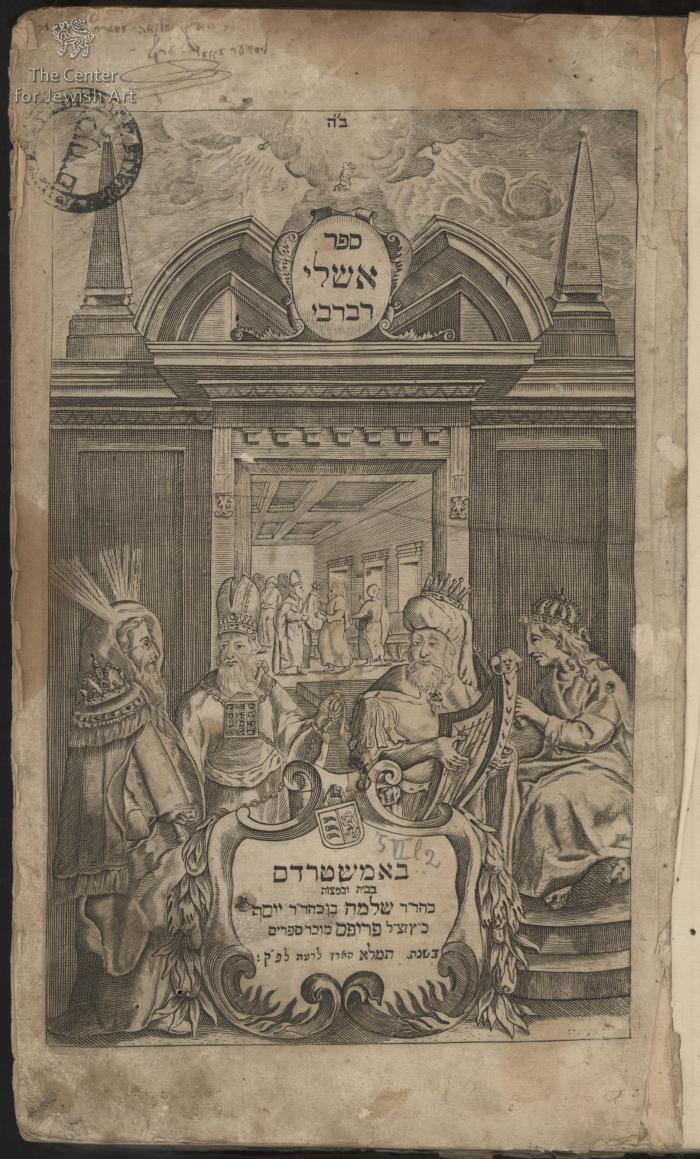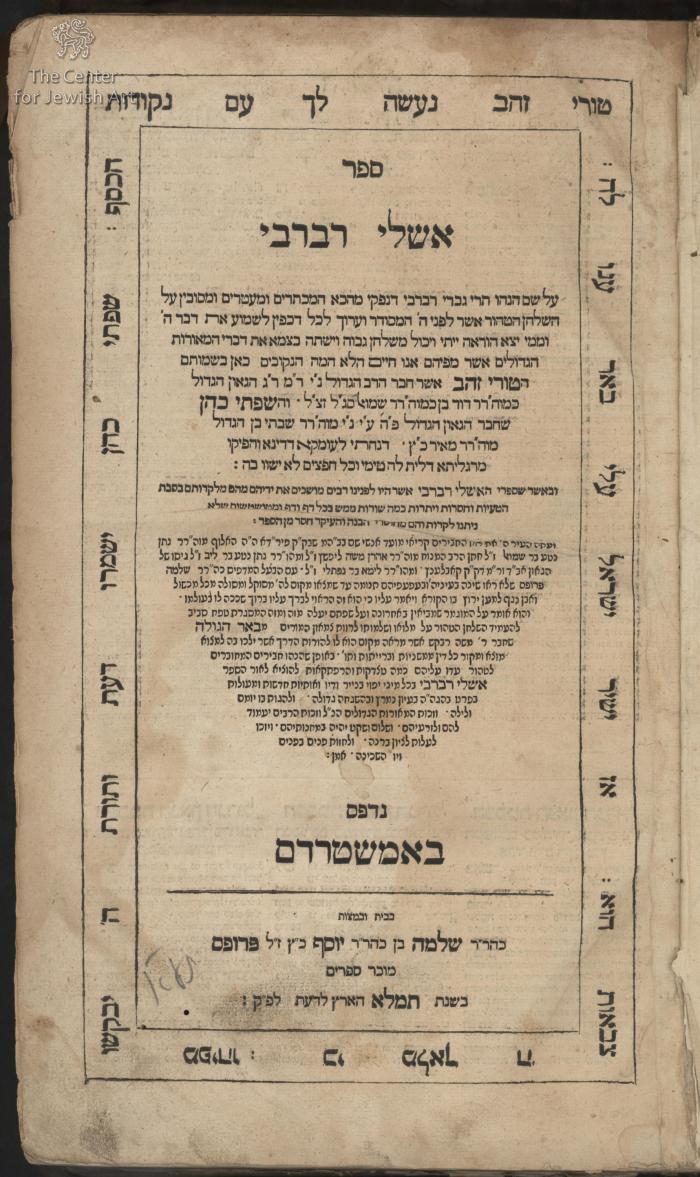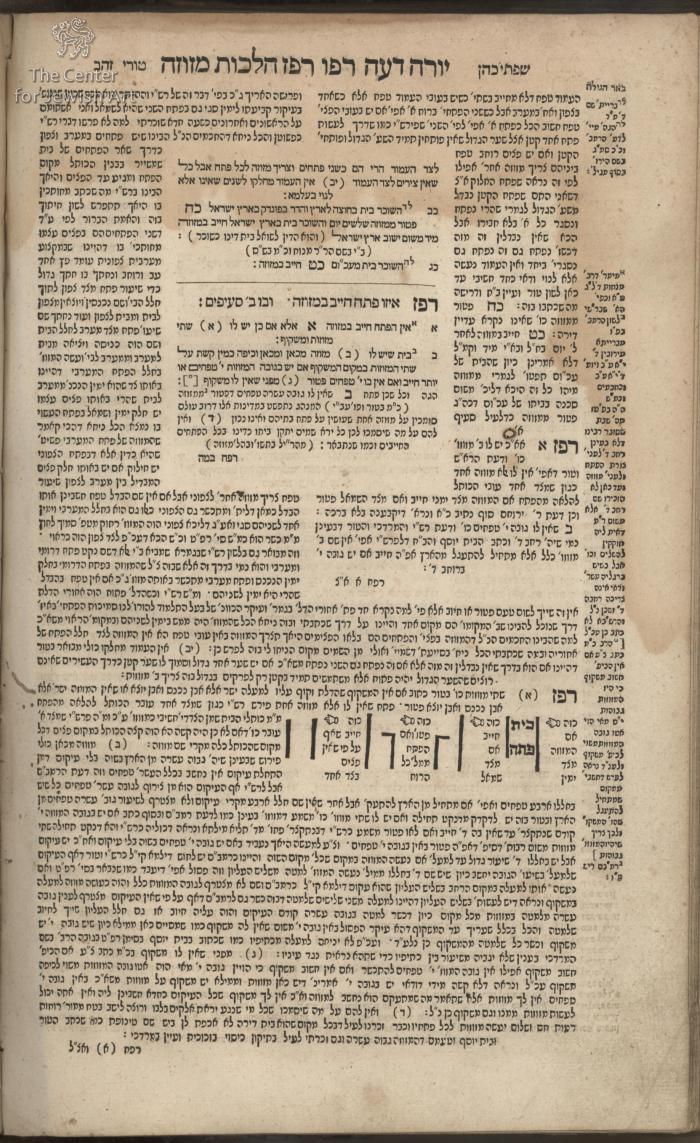Obj. ID: 35545 Eshlei Ravrevei by Yosef ben Ephraim Karo, Amsterdam, 1711

sub-set tree:
This text was prepared by William Gross:
The Eshlei Ravrevei is a text of Shulchan Aruch'st Yoreh Deah (the part related to ritual law) by Yosef Karo, with commentaries customarily included therein, including Turei Zahav, Siftei Kohen, and Beer ha-Golah. Yoreh Deah was published earlier as Eshlei Ravrevei in Wilhelmsdorf in 1677 and 1686 , without Moses Rivkes' commentary, but with HaRav Isserles comments, presenting alternative determinations in the spirit of the Ashkenazic tradition.
The edition has a beautiful engraved title page by the artist.Avraham bar Ya'akov, the same artist who rendered the groudbreaking illustrations for the 1695 Amsterdam Haggadah.
The frontispiece shows Moses, Aaron, David and Solomon sitting. The symbolize in turn the crown of Torah, priesthood and kingdom and the "crown of a good name that is superior to all these" (Pirkei Avot 4:17). The cooperplate was used earlier at least once by Immanuel Athias in Shnei Luchot ha-Brit, published in 1698. The same artist, Avraham bar Ya'akov, created both the famous illustrations for the Amsterdam Haggadah, as well as the frontispiece for the Yiddish Bible published at the Uri Phoebus press in 1679. He is commonly considered to be a convert from the Rhine area, who reconverted to Judaism only in Amsterdam.
This title page was also used on the later edition of Eshlei Ravrevei from Amsterdam, 1743, also in the Gross Family Collection (B.263).
The press set up by Solomon Proops became the most famous of all the presses operating in Amsterdam in the 18th century, apart from the Menasseh ben Israel press. Solomon's father Joseph came to Amsterdam from Poznan. Solomon Proops was initially involved in the bookselling trade, and in 1677 was admitted to the Amsterdam Guild of Booksellers, Printers and Bookbinders. In 1704 he set up his own press, which was to become the longest operating and most productive of all the Jewish presses in Europe in the 18th C. He acquired the fame of a printer who produced beautiful books that could be bought at a reasonable price.





